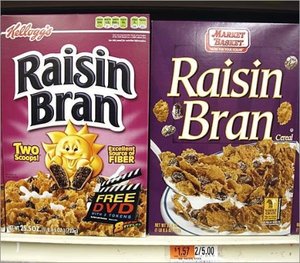Marketers of Healthy Brand-Name Products: Take Advantage of Your Advantage!
Picture this: A consumer is walking up and down the aisles of the grocery store doing her weekly shopping, and she stops to grab a product off the shelf. There are two choices. One is a brand-name product, and the other is the store's generic equivalent. Both products have the same ingredients and nutrition facts. Which one does she choose? According to the 2017 IFIC Food and Health Survey, she's more likely to choose the brand-name product.
Why does the brand-name product have a perceived halo of health? Maybe the consumer thinks the ingredients, though the same, are of a higher quality. Maybe she assumes it was made with greater levels of safety and oversight. Or maybe she's just loyal to that particular brand-name product.
No matter the reason, one thing is for sure. Brands should take advantage of this advantage!
Three ways to build trust with a brand-name halo
Brands have an advantage when it comes to health perception, yet consumers are still skeptical about what they say about their healthy eating. In fact, according to the IFIC survey, food brands are consumers’ least-trusted source of information on which foods to eat or avoid. Healthy brands have a clear opportunity to build trust and relationships with consumers. This can be done three ways:
- Communicate directly with consumers
- Earn professional recommendations
- Position your products as part of a healthy diet
Direct communication
Sure, brands have invested significant resources in social media and online presences that are helpful or humorous, but that’s not how you build trust and credibility. Rather, brands should be transparent, relevant, open, and honest.
Professional recommendations
While food brands are consumers’ least-trusted source of information when it comes to which foods to eat and avoid, health professionals are their most-trusted source of information. When professionals recommend a specific food brand, they are communicating to their patients and clients that they approve of and trust the brand they are recommending. It is, essentially, a tacit endorsement. If healthy brands want to build trust, there's no better way than through an already-trusted source.
Product positioning
Consumers already perceive name brand-name products to be healthier than their generic versions, but be careful how you position yourself. Emphasize your brand's role as part of a healthy diet—just one player in a larger game—instead of suggesting you're the silver bullet for health.
Brands, you have a huge advantage that you should be capitalizing on. Consumers already perceive your products as healthy. Now it’s time to use that advantage to gain their trust as well.

